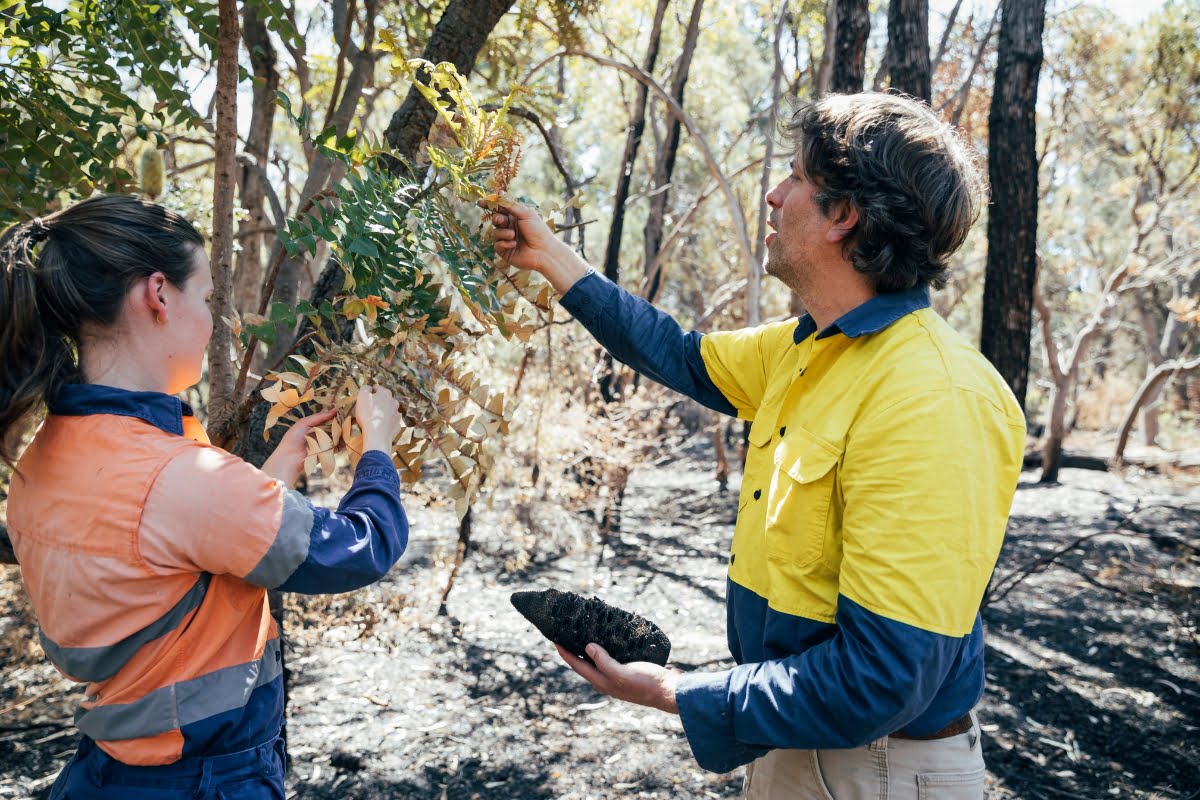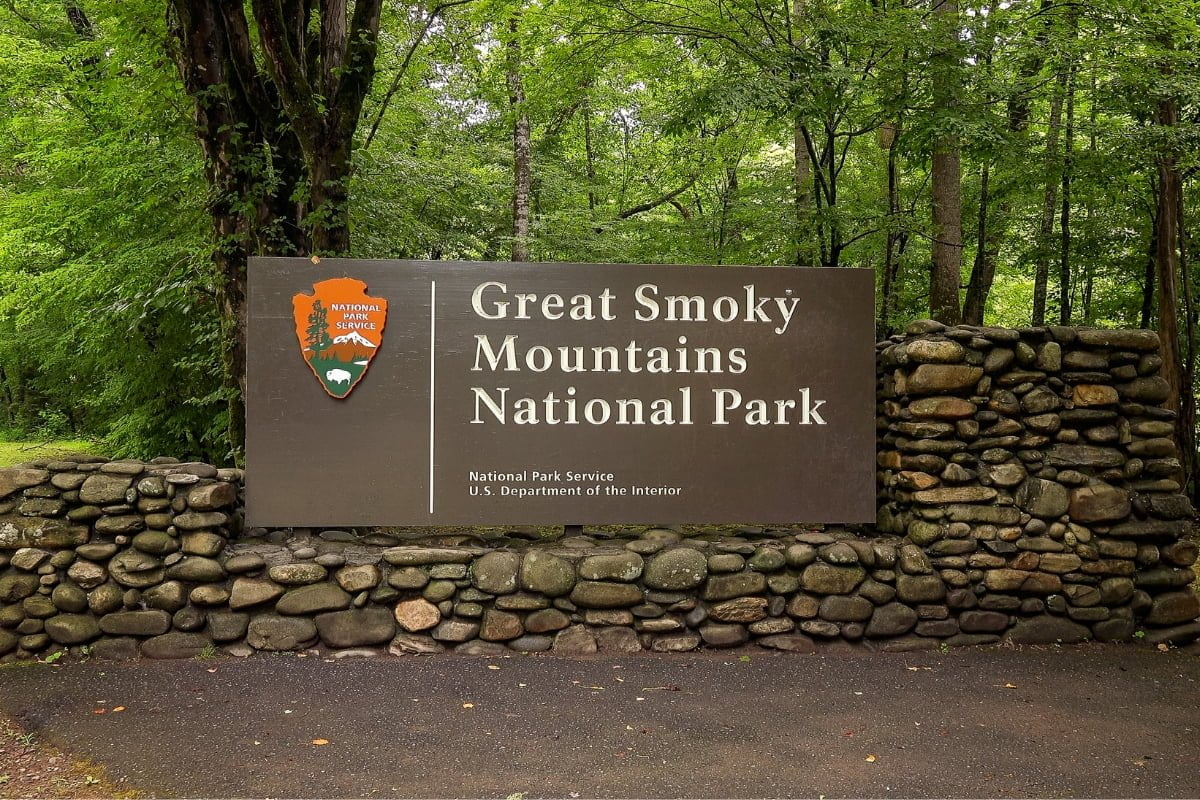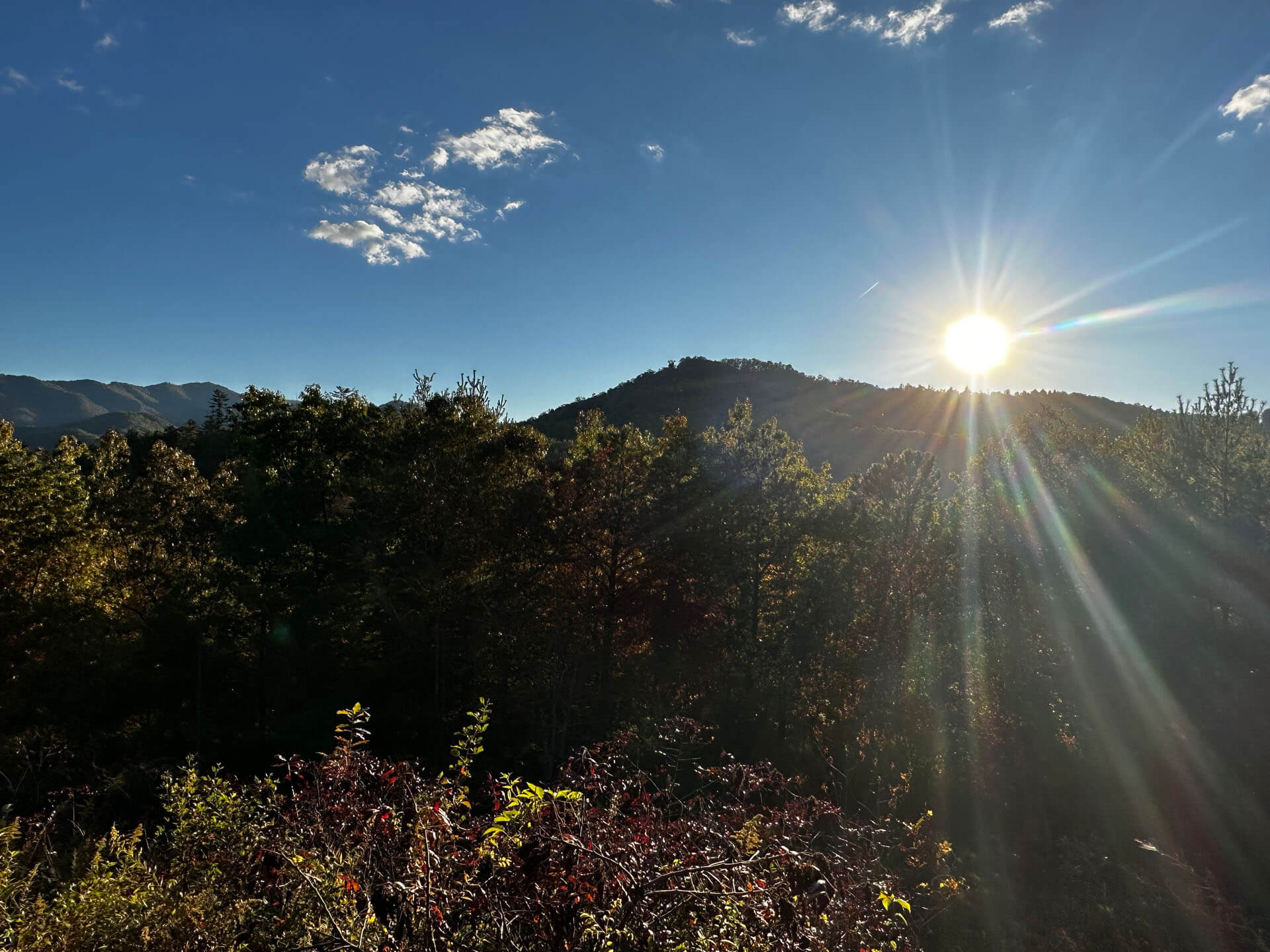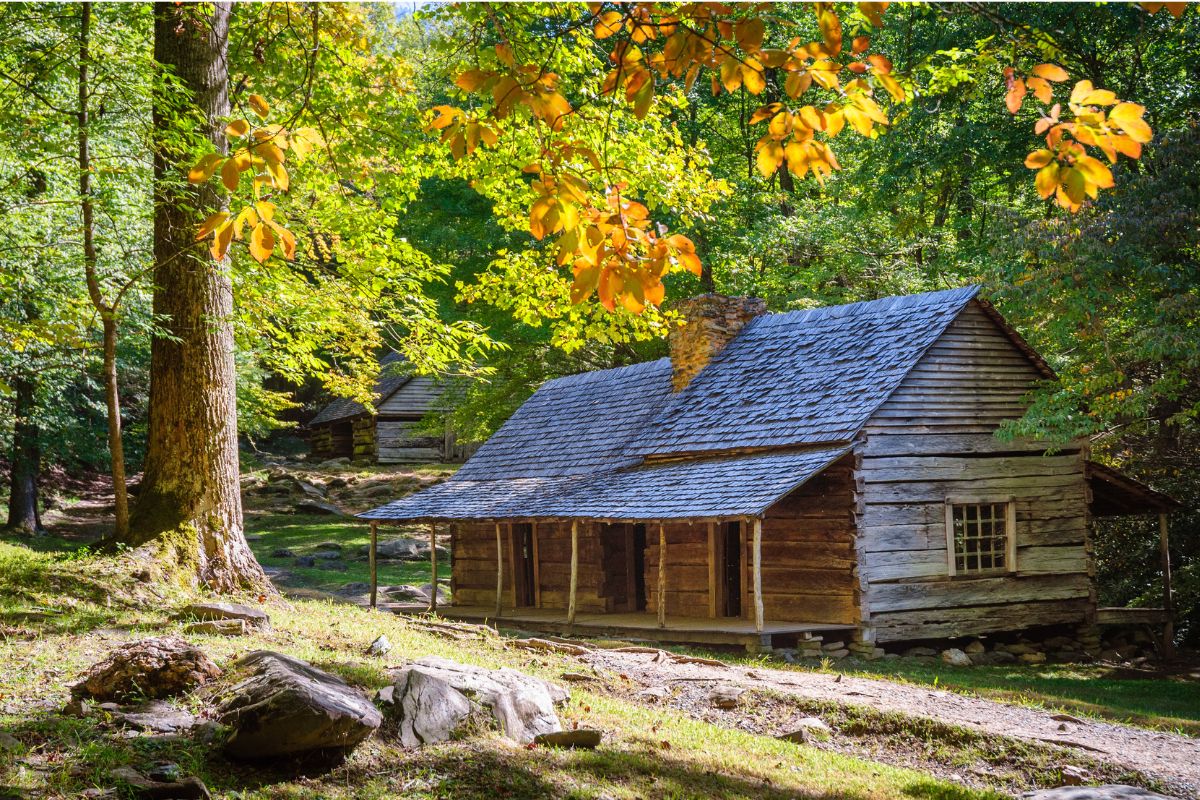The Smoky Mountains, renowned for their breathtaking beauty and rich biodiversity, are at the heart of vital wildlife conservation efforts that are transforming the region’s future. These initiatives aim to protect and restore habitats, preserve endangered species, and ensure the health and diversity of the ecosystem for generations to come.
In this guide, we’ll explore the importance of wildlife conservation and the efforts underway in the Smoky Mountains, highlighting key projects, successes, and the ongoing challenges faced by conservationists.
From reintroducing native species to combating invasive threats, discover how dedicated efforts are making a profound difference in preserving this natural treasure. Join us as we delve into the inspiring stories and innovative strategies that are shaping the future of wildlife in the Smoky Mountains.
Want to Preserve Wildlife in the Smoky Mountains? Learn about the Latest Conservation Efforts
Reviving Vulnerable Species Through Habitat Restoration

The Smoky Mountains are home to a diverse range of species, some of which are on the brink of extinction. However, through habitat restoration projects, conservationists are working tirelessly to revive these endangered populations. By focusing on preserving and enhancing the natural habitats of these species, they aim to create a sustainable environment where wildlife can thrive.
Reforestation and Native Planting
Habitat restoration involves various strategies, including reforestation and the removal of invasive species. Reforestation projects focus on planting native trees and plants that provide essential food and shelter for wildlife.
By restoring forested areas, conservationists help to reestablish natural habitats for numerous species. Native plants are carefully selected to ensure they support the dietary and shelter needs of local wildlife, enhancing biodiversity and ecosystem health.
Reforestation also plays a crucial role in combating soil erosion, improving water quality, and sequestering carbon, contributing to broader environmental goals.
Removal of Invasive Species
Removing invasive species is another critical component of habitat restoration. Invasive plants and animals can outcompete native species for resources, disrupting the balance of the ecosystem.
Conservationists work to identify and eradicate these invaders, allowing native species to recover and thrive.
This process often involves manual removal, controlled burns, and the use of herbicides, all carefully managed to minimize impact on the environment. By restoring native plant communities, conservationists create healthier habitats that support a wider range of wildlife.
Volunteer Programs and Community Engagement
Guests at local resorts can actively participate in these habitat restoration projects through volunteer programs.
By getting involved in hands-on activities such as planting trees or removing invasive plants, visitors not only contribute to wildlife conservation projects and efforts but also gain a deeper understanding of the importance of preserving biodiversity.
These programs provide educational opportunities, teaching participants about local ecosystems, the challenges faced by endangered species, and the strategies used in conservation. Engaging the public in these efforts helps to build a community of informed and passionate conservation advocates.
Restoration of Wetland Habitats
Wetland restoration is another vital aspect of habitat restoration efforts in the Smoky Mountains. Wetlands provide critical habitats for many species, including amphibians, birds, and plants.
Projects aimed at restoring wetlands involve re-establishing natural water flows, planting native wetland vegetation, and removing barriers that impede water movement.
These efforts help to recreate functioning wetland ecosystems that support a high level of biodiversity and provide essential services such as water filtration and flood control.
By integrating these comprehensive habitat restoration strategies, conservationists in the Smoky Mountains are making significant strides in reviving endangered species and preserving biodiversity. These efforts not only protect and restore vital ecosystems but also engage the public in meaningful conservation actions, fostering a collective commitment to safeguarding the natural world for future generations.
The Role of Community Engagement in Wildlife Conservation

Wildlife conservation cannot succeed without active community engagement. Local communities play a crucial role in protecting and preserving their natural surroundings. Through education and awareness campaigns, residents are empowered to become stewards of their environment, ensuring the longevity and health of local ecosystems.
Education and Awareness Campaigns
In the Smoky Mountains region, community engagement takes many forms. Local schools organize field trips to nature reserves and wildlife sanctuaries, exposing students to the wonders of nature from an early age.
These experiences foster a sense of appreciation for wildlife and instill a desire to protect it. Educational programs incorporate hands-on learning, where students participate in activities like planting trees, monitoring wildlife, and learning about local flora and fauna.
By integrating conservation topics into the curriculum, schools help create a generation of environmentally conscious individuals.
Citizen Science Programs
Community-led initiatives such as citizen science programs allow residents to actively contribute to a local wildlife conservation society. These programs engage community members in collecting data on species populations, habitat conditions, and environmental changes.
For example, residents might participate in bird counts, butterfly surveys, or water quality testing. The data collected is invaluable to scientists and conservationists, providing a broader and more detailed understanding of local ecosystems.
Citizen science programs not only aid in research but also foster a sense of ownership and responsibility towards the environment among participants.
Role of Resorts and Businesses
Resorts in the area also play a vital role in community engagement. They organize workshops and seminars on wildlife conservation, inviting experts to share their knowledge and experiences.
These initiatives not only educate guests but also inspire them to make sustainable choices during their stay. Resorts may offer eco-friendly accommodations, promote sustainable tourism practices, and provide guests with information on how to minimize their environmental footprint.
Additionally, some resorts implement programs that allow guests to participate in conservation efforts, such as guided wildlife tours, beach clean-ups, and conservation volunteering opportunities.
Collaboration with Local Conservation Organizations
Collaborating with local conservation organizations enhances community engagement in wildlife conservation.
These organizations often provide resources, expertise, and support for community-led projects. They might offer training sessions on conservation techniques, supply materials for habitat restoration, or help organize community events.
By working together, communities and conservation organizations can achieve more significant and lasting impacts.
Public Awareness Campaigns
Public awareness campaigns play a critical role in educating the broader community about wildlife conservation.
These campaigns utilize various media platforms, including social media, local newspapers, radio, and television, to reach a wide audience.
They highlight the importance of conservation, share success stories, and provide practical tips on how individuals can contribute. Engaging storytelling and visually appealing content can capture the public’s attention and inspire action.
Sustainable Tourism Practices Promoting Conservation

Tourism can have both positive and negative impacts on wildlife conservation. However, by adopting sustainable practices, the tourism industry can become a powerful force for conservation.
In the Smoky Mountains, resorts and tour operators are increasingly embracing sustainable tourism practices. This includes minimizing waste generation, conserving water and energy, and supporting local communities through responsible sourcing of goods and services.
One example of sustainable tourism in action is eco-friendly accommodations that blend seamlessly with the natural surroundings. These resorts prioritize low-impact construction methods and use renewable energy sources whenever possible. By reducing their carbon footprint, they contribute to the overall preservation of the ecosystem.
Additionally, tour operators offer guided excursions that prioritize wildlife observation while minimizing disturbance to natural habitats. Visitors are educated about responsible behavior in nature, such as maintaining a safe distance from animals and refraining from littering.
Challenges Faced by Wildlife Conservation in the Area

While there have been significant achievements in wildlife conservation in the Smoky Mountains, numerous challenges persist.
Habitat Loss Due to Urbanization:
- Habitat loss due to urbanization remains a pressing issue. As human populations continue to grow, more land is cleared for development, fragmenting habitats and disrupting ecosystems.
- This fragmentation makes it difficult for wildlife to find food, mate, and migrate, leading to population declines.
- Conservationists work tirelessly to protect remaining natural areas from encroachment by advocating for sustainable land use practices and creating wildlife corridors to connect fragmented habitats.
Invasive Species Threats:
- Invasive species pose a significant threat to native wildlife. Non-native plants and animals can outcompete native species for resources such as food, water, and space, leading to a decline in biodiversity.
- Invasive species can alter habitats and disrupt the natural balance of ecosystems.
- Efforts are underway to control and eradicate invasive species through methods such as manual removal, biological control, and public education about preventing their spread. Despite these efforts, managing invasive species is an ongoing battle requiring constant vigilance and adaptation.
Climate Change Impacts:
- Climate change is another major challenge facing wildlife conservation. Rising temperatures, changing weather patterns, and extreme weather events can disrupt the delicate balance of ecosystems, affecting the survival of many species.
- Altered precipitation patterns can impact water availability and the health of aquatic habitats.
- Conservationists are studying the impacts of climate change and implementing strategies to mitigate its effects. These strategies include habitat restoration to enhance ecosystem resilience, protecting climate refugia—areas that remain relatively unaffected by climate change—and promoting adaptive management practices to anticipate and respond to environmental changes.
Funding and Resource Constraints:
- Securing adequate funding and resources is a constant challenge for conservation. Conservation projects often require significant financial investment for activities such as land acquisition, habitat restoration, and species monitoring.
- Limited funding can constrain the scope and effectiveness of conservation initiatives.
- Advocacy for increased funding, public-private partnerships, and community involvement are essential to overcoming these financial barriers.
Human-Wildlife Conflicts:
- Human-wildlife conflicts present another obstacle. As human activities expand into natural areas, interactions between people and wildlife increase, sometimes leading to negative encounters like wildlife cime.
- These conflicts can result in harm to both humans and animals.
- Conservationists work to stop wildlife crime and mitigate these conflicts through public education, promoting coexistence strategies, and implementing measures such as wildlife crossings and fencing to keep animals away from human settlements.
Success Stories: Impact of Conservation Efforts on Wildlife Populations

The impact of wildlife conservation in the Smoky Mountains is evident through numerous success stories. These efforts have not only preserved the natural heritage of the region but have also led to the resurgence of several key species, showcasing the effectiveness of targeted conservation strategies.
Peregrine Falcon Recovery
One notable success is the recovery of the peregrine falcon population. Once on the brink of extinction due to pesticide use, particularly DDT, these magnificent birds have made a remarkable comeback.
Through captive breeding programs, reintroduction efforts, and stringent habitat protection measures, their numbers have steadily increased.
Conservationists established artificial nesting sites on cliff faces and monitored the falcons’ progress, ensuring their successful adaptation and breeding in the wild. Today, the sight of a peregrine falcon soaring above the Smoky Mountains is a testament to the power of dedicated conservation work.
Elk Reintroduction
The restoration of elk populations is another triumph in wildlife conservation. Elk were once native to the Smoky Mountains but were extirpated from the region by the mid-1800s due to overhunting and habitat loss. In 2001, a reintroduction program began, bringing elk back to their historic range in the Smoky Mountains after being absent for over a century.
Conservationists carefully selected and relocated elk from thriving populations in Kentucky and Pennsylvania. Through habitat management, such as creating open fields and controlling invasive plant species, the elk have found a suitable environment to thrive.
Today, visitors can witness their awe-inspiring displays during mating season, known as the rut, when male elk, or bulls, engage in dramatic displays of strength and compete for mates.
Black Bear Population Increase
Conservation efforts have also led to an increase in black bear populations. The Smoky Mountains provide an ideal habitat for black bears, but their numbers had dwindled due to habitat destruction and poaching.
By preserving their natural habitats and implementing measures to reduce human-bear conflicts, these iconic creatures now thrive in the Smoky Mountains. Park authorities have educated the public on proper food storage and waste disposal to minimize attractants that draw bears into human-populated areas.
Additionally, the establishment of bear sanctuaries and corridors has facilitated safe movement and genetic exchange between bear populations. These efforts have resulted in a healthy and stable black bear population, allowing visitors to enjoy the sight of these magnificent animals in their natural habitat.
These success stories underscore the importance of ongoing conservation efforts and highlight the positive impact that dedicated initiatives can have on wildlife populations. The resurgence of these species in the Smoky Mountains serves as an inspiration for future conservation endeavors, demonstrating that with commitment and collaboration, we can protect and restore our natural heritage.
Education and Awareness Campaigns: Shaping Future Conservationists

An essential aspect of wildlife conservation is educating future generations about the importance of preserving biodiversity. In the Smoky Mountains region, education and awareness campaigns target both residents and visitors, aiming to cultivate a deeper understanding and appreciation of the natural world.
Environmental Education in Schools
Local schools incorporate environmental education into their curriculum, teaching students about local ecosystems and ways they can contribute to conservation efforts.
This includes hands-on learning experiences, such as field trips to national parks, wildlife refuges, and nature centers, where students can observe and study wildlife in their natural habitats.
Teachers utilize interactive lessons and projects that focus on topics like habitat preservation, endangered species, and the impact of human activities on the environment.
By engaging students with real-world examples and encouraging critical thinking, these programs aim to foster a lifelong commitment to conservation.
Wildlife Expert Presentations
Presentations by wildlife experts provide guests with in-depth knowledge about local species, conservation challenges, and ongoing efforts to protect biodiversity.
These sessions often include multimedia presentations, live demonstrations, and Q&A segments, fostering an engaging and informative experience. By fostering a connection with nature and instilling a sense of responsibility, these initiatives inspire individuals to become advocates for wildlife conservation.
Youth and Family Programs
These programs emphasize the importance of environmental stewardship and provide practical ways for families to get involved in conservation efforts, such as participating in citizen science projects or supporting local conservation initiatives.
Special programs targeting youth and families are designed to make learning about conservation fun and accessible. Junior Ranger programs, wildlife camps, and family-friendly nature tours offer educational activities tailored to younger audiences.
Digital and Social Media Campaigns
In today’s digital age, leveraging social media and online platforms is crucial for reaching a broader audience.
Conservation organizations and parks in the Smoky Mountains use social media campaigns, websites, and mobile apps to share information about wildlife conservation, upcoming events, and ways to get involved.
These digital tools allow for interactive engagement, such as virtual tours, live-streamed wildlife sightings, and online educational resources, making conservation education accessible to people of all ages and locations.
Sustainable Practices and Green Initiatives for Long-term Preservation

Ensuring the long-term preservation of the Smoky Mountains’ wildlife requires sustainable practices and green initiatives that balance environmental conservation with human activity. These efforts focus on habitat protection, pollution reduction, and responsible tourism, creating a holistic approach to preserving this precious ecosystem.
Sustainable Land Management
Conservation organizations collaborate with local communities to develop sustainable land management plans. These plans prioritize the protection of critical habitats and promote the sustainable use of natural resources. Key aspects include:
- Habitat Restoration: Initiatives to restore degraded habitats, such as reforestation projects, wetland restoration, and invasive species control, help rebuild and maintain the natural environment.
- Buffer Zones: Establishing buffer zones around sensitive areas to minimize human encroachment and provide wildlife with safe spaces to thrive.
- Sustainable Agriculture and Forestry: Encouraging practices that reduce environmental impact, such as agroforestry, organic farming, and selective logging, ensures that land use supports both ecological health and local livelihoods.
Pollution Reduction
Efforts are underway to reduce pollution and minimize human impact on the environment. This includes:
- Waste Management Systems: Implementing comprehensive waste management systems that prioritize recycling, composting, and reducing single-use plastics. Public education campaigns help raise awareness about the importance of proper waste disposal.
- Water Quality Initiatives: Monitoring and improving water quality through pollution control measures, such as reducing agricultural runoff, treating wastewater, and protecting riparian buffers.
- Air Quality Programs: Promoting clean air initiatives by encouraging the use of renewable energy sources, reducing vehicle emissions, and supporting policies that limit industrial pollution.
Renewable Energy and Energy Efficiency
Promoting the use of renewable energy and improving energy efficiency are crucial for reducing the environmental impact of human activities. Key initiatives include:
- Solar and Wind Energy Projects: Supporting the installation of solar panels and wind turbines to reduce reliance on fossil fuels.
- Energy-efficient Buildings: Encouraging the construction and retrofitting of buildings to meet energy-efficient standards, reducing overall energy consumption.
- Public Transportation: Developing and promoting public transportation options to reduce the number of private vehicles on the roads, decreasing air pollution and habitat fragmentation.
Research and Monitoring
Ongoing research and monitoring are critical for adapting and improving conservation strategies. Key activities include:
- Biodiversity Surveys: Conducting regular surveys to monitor wildlife populations and biodiversity levels, helping to identify trends and inform management decisions.
- Climate Change Studies: Investigating the impacts of climate change on local ecosystems and developing adaptation strategies to mitigate these effects.
- Citizen Science Programs: Involving the public in data collection efforts through citizen science programs, which can provide valuable information while fostering community involvement in conservation efforts.
By integrating these sustainable practices and green initiatives, the Smoky Mountains can be preserved for future generations. This comprehensive approach ensures that both the natural environment and local communities benefit, creating a sustainable and thriving ecosystem.
Stop Wildlife Crime and Ensure a Sustainable Future for Wildlife in the Smoky Mountains
The future of wildlife in the Smoky Mountains depends on our collective efforts to protect their habitats and preserve biodiversity. By supporting national wildlife federation works through volunteering or donating to organizations dedicated to this cause, individuals can make a significant impact. Every small action contributes to the larger mission of safeguarding our planet’s natural wonders.
The Smoky Mountains are not just a picturesque landscape; they are a testament to what can be achieved when communities come together in support of wildlife conservation networks. To experience this beauty for yourself sustainably, choose Basecamp Smoky Mountains. Our accommodations promise luxury and privacy in the heart of the Smoky Mountains. Contact us today at (828) 809-1921 or visit our website to fill out the contact form for your next eco-friendly adventure today!







